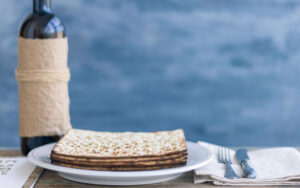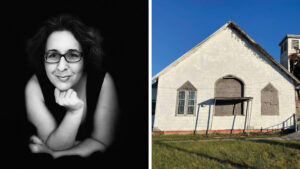By Jo Ann Windman
At Baltimore Hebrew Congregation, we believe that the synagogue can play many roles in the lives of its members. Our congregants find support, friendship, community, meaning, learning and much more, both within and beyond our walls.
Together, we stand for social action and justice as part of our efforts to create a progressive, dynamic and diverse congregation filled with meaningful experiences and relationships.
To demonstrate our commitment to environmentally conscious stewardship in all of our activities and to uphold the time-honored values of Jewish tradition, BHC has initiated a “green” burial program in specific sections of our two congregational cemeteries. We are proud that our cemeteries are the first Jewish ones in the Baltimore metropolitan area to offer a green burial option.
A “green” or “natural” burial allows a body to return to the earth in a way that is as natural as possible. Key elements of green burial include:
• Not embalming or otherwise preserving the body, a traditional and widely practiced Jewish custom;
• Using an unfinished pine casket, which is also consistent with Jewish tradition;
• Burial in a “green” plot that requires no outer burial container, sometimes known as a vault or concrete liner.
BHC owns two cemeteries, one in the city that opened in 1832, and a newer one further out in the Reisterstown that opened in 1964. We develop sections in the cemeteries as needed, and because the land was purchased for cemetery purposes only, no additional zoning is necessary for green burial plots.
In June of 2017, the BHC Cemetery Committee recommended that we establish a green burial section. With approval from the congregation’s board of electors we designated approximately 100 existing lots – in areas that had been previously reserved for monuments – as green burial sites. These lots back up to an existing tree-lined area, negating the need for an engineer to create a layout and map specifically for green burial lots.
Except in the green sections of our cemeteries, an outer burial container and either a bronze footstone or an upright monument is required. In BHC’s green sections, individual green markers mark the head of each grave. These markers are natural, un-sculpted stone (no double or family markers) with space on which to engrave the deceased’s name and the date of birth and death.
The cost of a green burial lot is approximately $100 more than a lot in the monument section of the cemetery. The additional cost is added to the perpetual care fund to cover future expenses.
Because concrete liners will not be used, graves will need to be filled in as they settle. Families that purchase green burial plots are required to also purchase a natural stone from BHC at the same time.
Together with our cemetery contractor, I hand-picked these stones from a quarry and arranged for them to be delivered to the cemetery and placed on display.
The price of the stone includes $200 for the cemetery contractor to cover the cost to unload the stone, and once the purchase is paid in full, to move it to its lot. The price of the stone also includes up to three lines of engraving, which requires us to keep records to ensure that families are reminded to submit the necessary information for engraving.
The Green Burial Council, a California- based national organization, sets standards for different levels of green burial in the United States and certifies providers. Currently, BHC’s cemeteries offer a level of green burial that is not certified by the GBC. To reach the certification level would require that we not cut the grass or use weed-control chemicals on the plots, and that we hand-dig and hand-fill graves. For now, we have chosen to offer a level of green burial that ties closely to Jewish burial traditions.
Over the years, members of our congregation and the community at-large have expressed interest in green burials. Once the green burial sections in our cemeteries opened, several BHC congregants who previously had lots in the regular burial section exchanged them for others in the green burial section.
Although we hope not to have to use these lots – or any of our lots – for many years, we are proud to offer this forward-thinking, environmentally sound option to those who are interested in it.
Jo Ann Windman is Baltimore Hebrew Congregation’s executive director.





